Working with the Project Service Automation data model
Important
Dynamics 365 Project Service Automation has evolved into Dynamics 365 Project Operations. For more information, see Project Service Automation Transition.
Applies to Project Service app version 3.x
Dynamics 365 Project Service Automation extends other app entities and introduces its own entities in the Common Data Service data model. This article describes some of the entities that you will encounter in typical PSA reporting scenarios.
Reporting on opportunities
Project Service Automation extends the Dynamics 365 Sales Opportunity entity by adding fields that enable project-based scenarios. These fields are identified by a schema name that is prefixed with msdyn_. One new field that is important for reporting on PSA opportunities is Order Type. A value of Work Based for this field indicates that the opportunity is a PSA opportunity. Other fields that have been added to the entity include Contracting Organization, which captures the organization that is holding the opportunity, and Account Manager, which captures the name of the account manager who is responsible for the opportunity.
The Opportunity Line entity also includes fields that are related to Project Service. Billing Method indicates whether the opportunity line should be billed on a time-and-materials basis or a fixed-price basis, and Project captures the name of the project that is backing the opportunity. Other fields that you can report on capture costs and customer budget amounts for the line item.
Reporting on quotes
PSA extends the Sales Quote entity by adding project-related fields. Order Type distinguishes PSA quotes from non-PSA quotes. A value of Work Based for this field indicates that the quote is a PSA quote. Other fields that can be relevant to reporting on PSA quotes include amount fields, such as Chargeable Costs, Non-chargeable Costs, Gross Margin, Estimates, and Budget. Other useful fields indicate whether the quote is profitable, whether it will be completed on schedule, and whether it meets the customer's budget expectations.
PSA also extends the Sales Quote Line entity. One field that PSA adds is Billing Method, which indicates how the quote line will be billed (time and materials or fixed price). Other fields that have been added to the entity capture the related project that is backing the quote line, invoicing, cost, and budget.
PSA also adds new quote-related entities to the Dynamics 365 data model. Here are some examples:
- Quote Line Detail – This entity contains the project estimate details of the quote line. It has two records for each quote line. One record stores the cost and cost details of the quote line, and the other record stores the sales amount and sales details of the quote line.
- Quote Line Invoice Schedule – This entity contains the billing schedule for the quote line. This schedule is generated based on the invoicing frequency that is assigned to the quote line.
- Quote Line Milestone – This entity contains the billing milestones for fixed-price quote lines.
- Quote Line Analytics Breakdown – This entity contains financial details of the quote line. These details can be useful for reporting quoted sales and estimated cost amounts by various dimensions.
Other entities that PSA adds to quotes are Quote Line Project Price List, Quote Line Resource Category, and Quote Line Transaction Category.
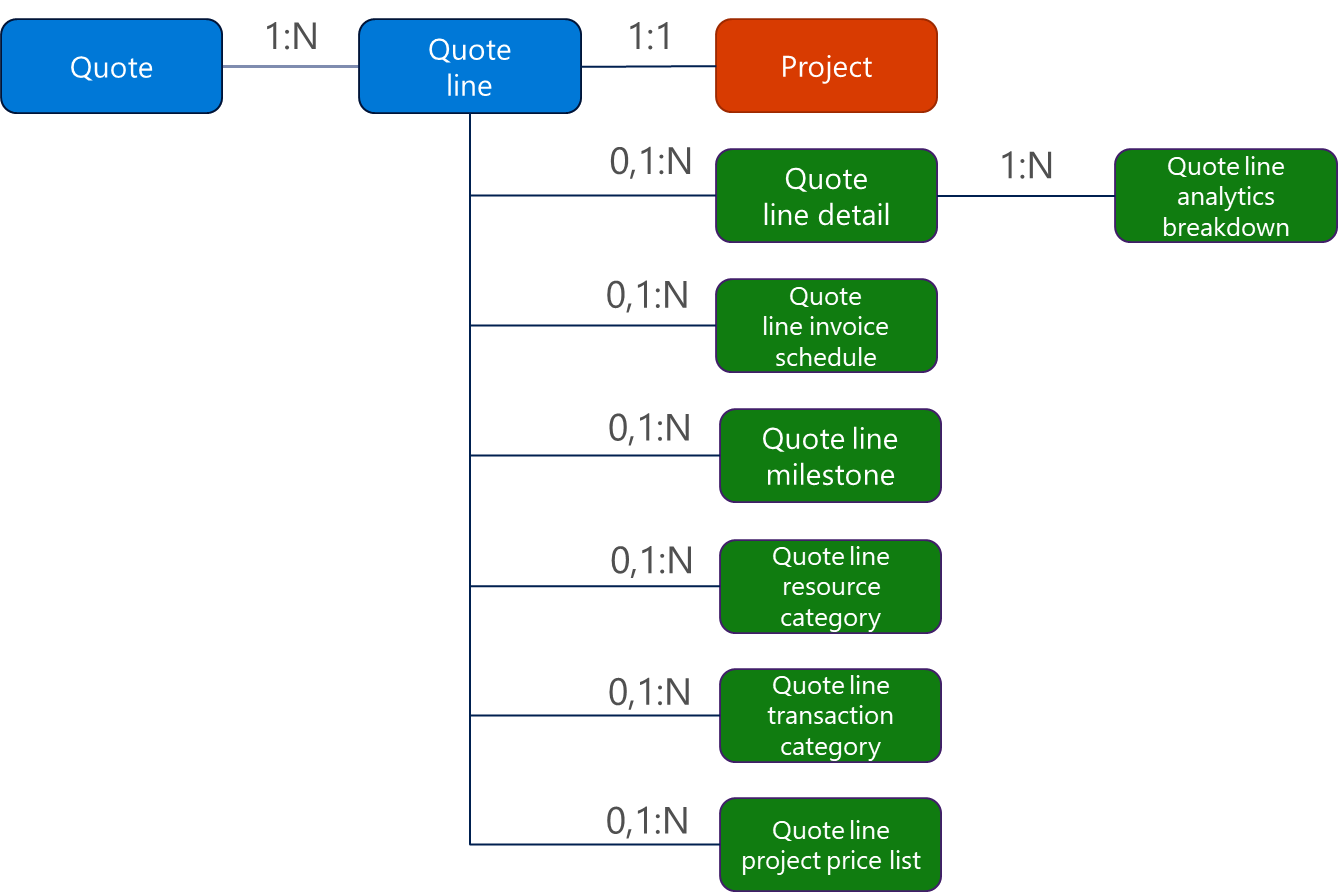
Reporting on project contracts
PSA extends the Sales Order entity that is used when project contracts are recorded. It adds an important new field, Order Type, that identifies the contract as a PSA project contract instead of a sales order. A value of Work Based for this field indicates that the order is a PSA project contract. Other new fields that are added to the Order entity capture details about costs, PSA contract status, and the organization that owns the contract.
PSA also extends the Sales Order Line entity. Among the fields that it adds are fields that capture the billing method (time and materials or fixed price), customer budget amounts, and the underlying project.
PSA also adds new entities that are designed for project contracts. Here are some examples:
- Project Contract Line Detail – This entity contains the line-level details that are rolled up to the contract line amount. These can be as detailed as line items that are generated from a project schedule at the task level.
- Contract Line Invoice Schedule – This entity contains the billing schedule that is generated based on the invoice frequency that is assigned to the contract line.
- Contract Milestone – This entity contains the billing milestones for contract lines that have a fixed-price billing term.
Other entities that PSA adds to contracts are Project Contract Line Project Price List, Project Contract Line Resource Category, and Project Contract Line Transaction Category.
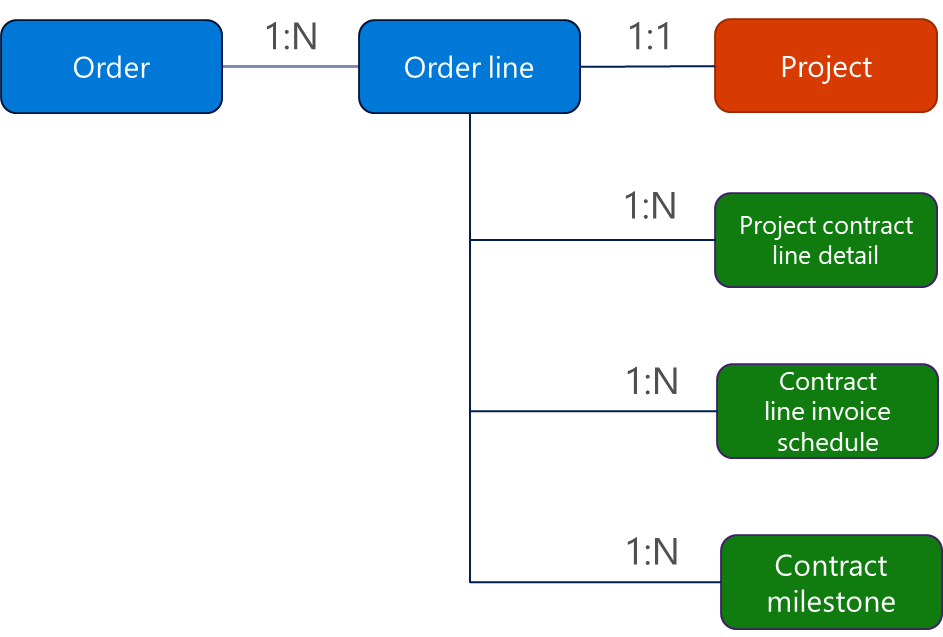
Reporting on projects
The Projects entity and its related entities are exclusive to PSA. Project is the top-level entity that is used to capture the work and cost side of operations. Here is a list of the related entities:
- Project team member – This entity contains details about the bookable resources that are assigned to the project. Those resources can be generic bookable resources, or they can be named bookable resources that are either entered by the project manager or generated from the project schedule.
- Project Task – This entity contains the tasks that make up the project plan or schedule.
- Resource Assignment – This entity contains the task assignment for the bookable resource.
- Resource Requirement – This entity contains the requirements for any generic resource team members.
- Estimate and Estimate line – These entities have a header/line relationship and contain expense estimates for the project. Task estimates are stored on the Resource Estimate entity.
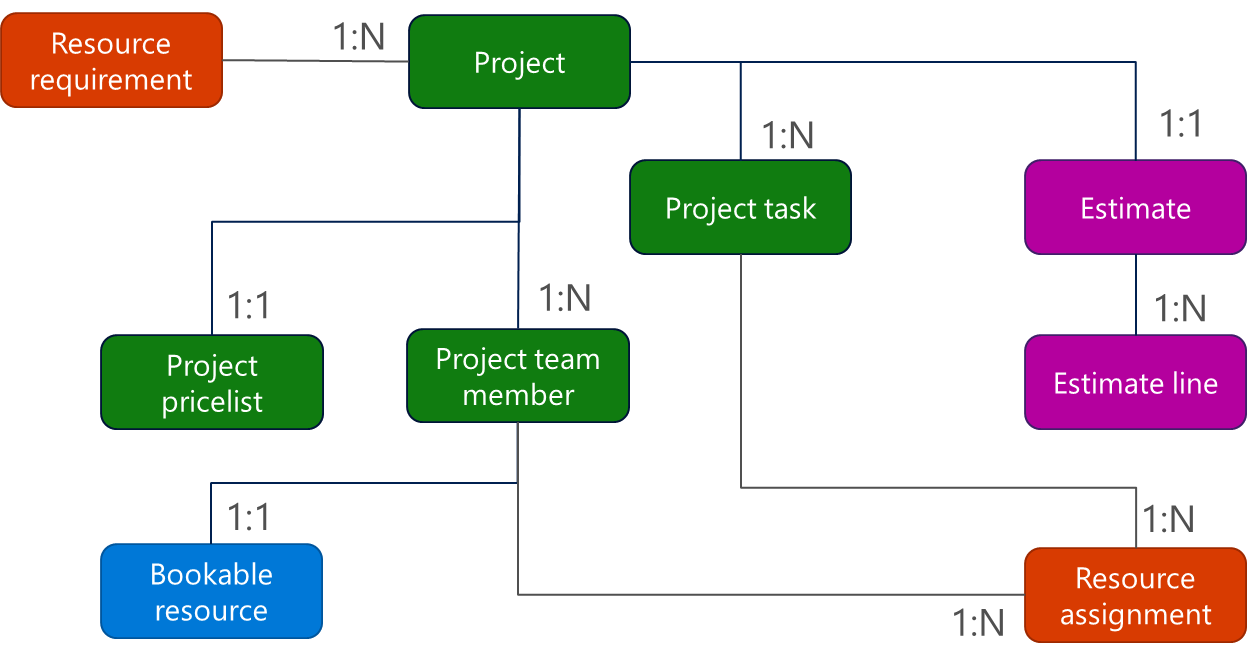
Reporting on resources
Project resources use the Bookable Resource entities from Universal Resource Scheduling (URS) that are shared with other apps, such as Microsoft Dynamics 365 Field Service. Here is a list of the entities that you might have to use when you report on project resources:
- Bookable Resource – This entity represents the user, contact, generic resource, account, group, or equipment that is used on the project team.
- Bookable Resource Characteristics – This entity includes the skills, certifications, or education of the resource. The characteristics can have rating values that are defined by the rating model.
- Bookable Resource Category – This entity represents the role of the bookable resource.
- Bookable resource bookings – This entity represents the time that is booked on projects for the resource. Each booking has both a header entity and line entities, and each line has a status that represents the status of the booking.
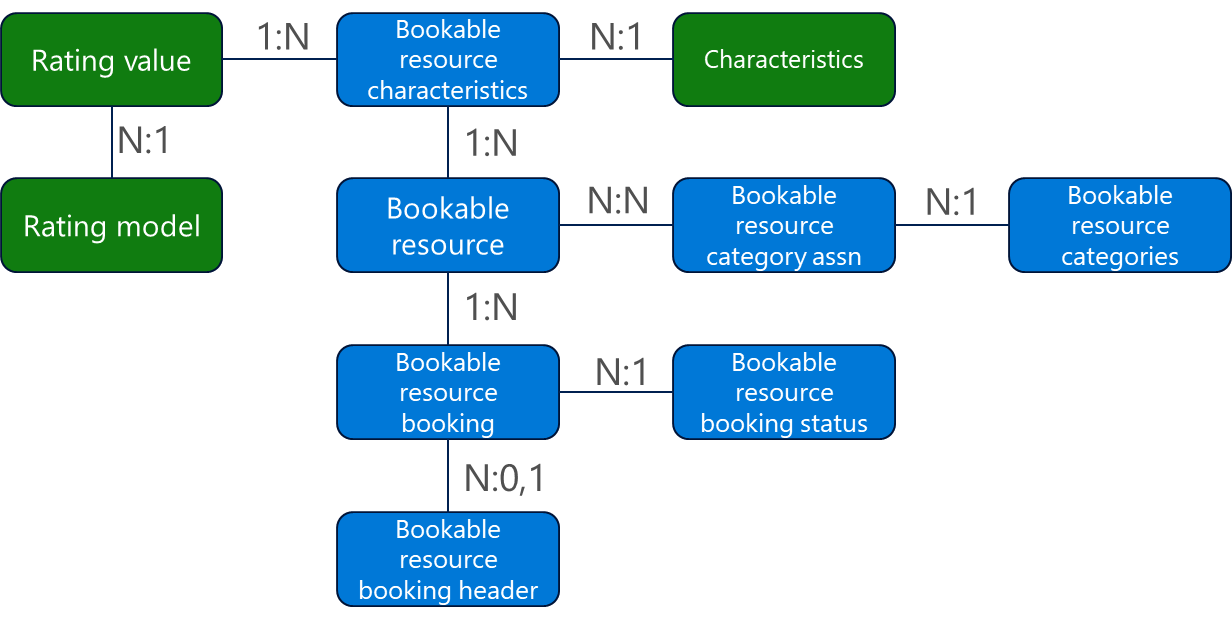
Reporting on actual transactions
When you approve a timesheet or expense, or invoice a contract in PSA, the business transaction is captured in the Actual entity. This entity can serve as the basis for almost all finance-related reports in PSA. The Actual entity captures the cost and sales transactions for the business event. It also captures many relevant attributes.
When you're working with the Actual entity, it's important that you understand what transaction or transactions are recorded in the entity, and when the transactions are recorded. Here is the typical flow when you work with time entries (the flow for expense entries is similar):
When the time entry is saved, no records are created in the Actual entity.
When the time entry is submitted, no records are created in the Actual entity.
When the time entry is approved, one record is be created in the Actual entity, and a second record can also be created. The first record stores the cost of the time entry. The second record stores the unbilled sales amount of the time entry. The second record is dependent on the project either having a customer, a quote, or a contract line assigned to it.
Document date Transaction type Transaction class Customer Contract Resource Resource role Billing type Quantity Unit price Amount 2/3/18 Cost Time Alpine ski house Alpine CRM Ashley Chinn Project Mgr Chargeable 8.0 50.00 400.00 2/3/18 Unbilled sales Time Alpine ski house Alpine CRM Ashley Chinn Project Mgr Chargeable 8.0 100.00 800.00 These two records are separate but related records. They are neither debits nor credits.
If a contract is associated with the project, when the time entry is invoiced, two more records are created in the Actual entity. First, a negative amount for the unbilled sales record is created. This record essentially reverses the unbilled sale. Second, a transaction for the billed sale is created. Once again, these records are separate but related records, not debits and credits.
Document date Transaction type Transaction class Customer Contract Resource Resource role Billing type Quantity Unit price Amount 2/4/18 Unbilled sales Time Alpine ski house Alpine CRM Ashley Chinn Project Mgr Chargeable - 8.0 100.00 - 800.00 2/4/18 Billed sales Time Alpine ski house Alpine CRM Ashley Chinn Project Mgr Chargeable 8.0 100.00 800.00
The Transaction Origin entity records the origin of the Actual record, and the Transaction Connection entity records the related records for the Actual record. Additionally, the Actual record contains references the project, project contract (order), bookable resource, and customer.
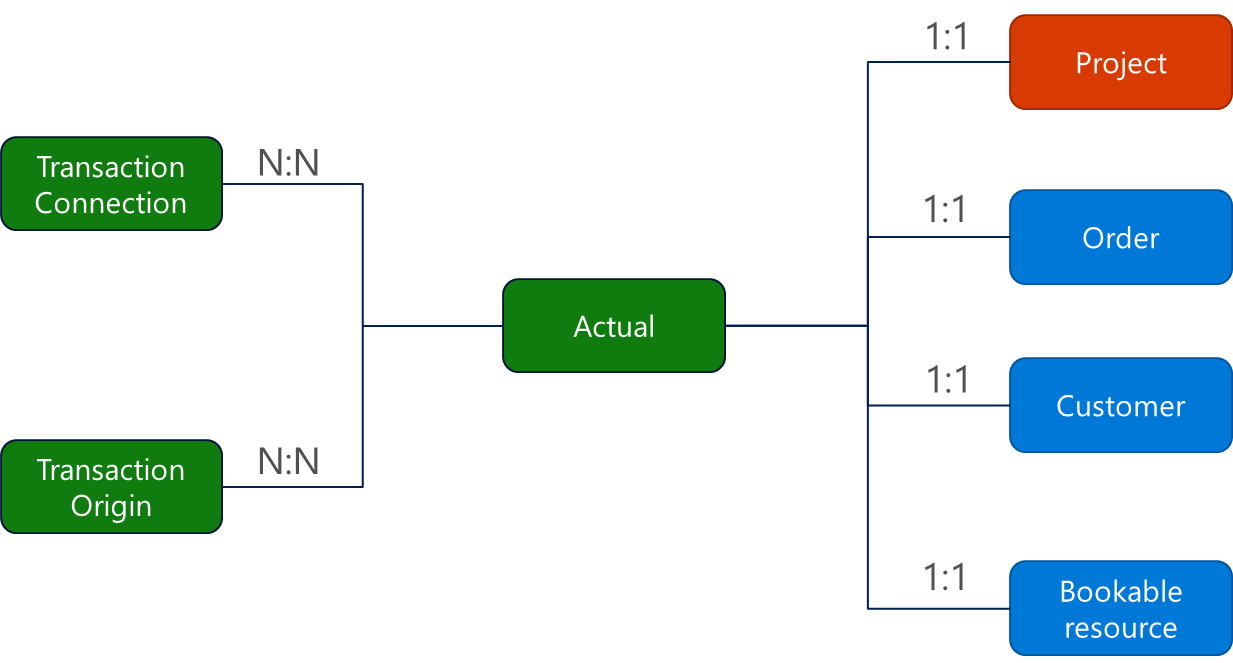
Feedback
Coming soon: Throughout 2024 we will be phasing out GitHub Issues as the feedback mechanism for content and replacing it with a new feedback system. For more information see: https://aka.ms/ContentUserFeedback.
Submit and view feedback for